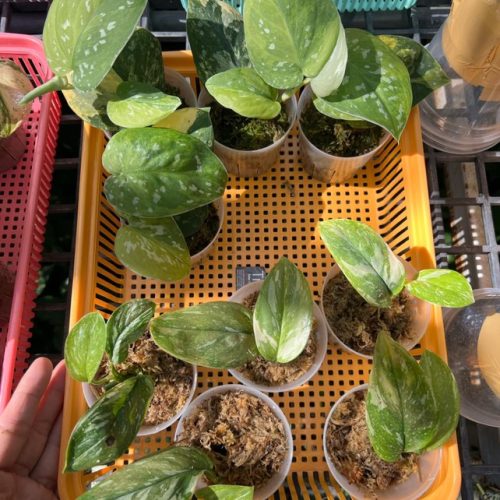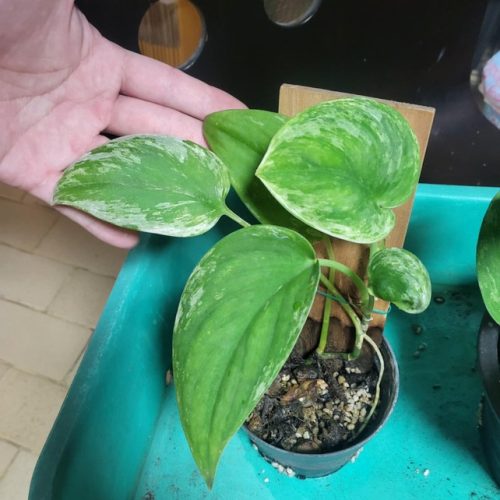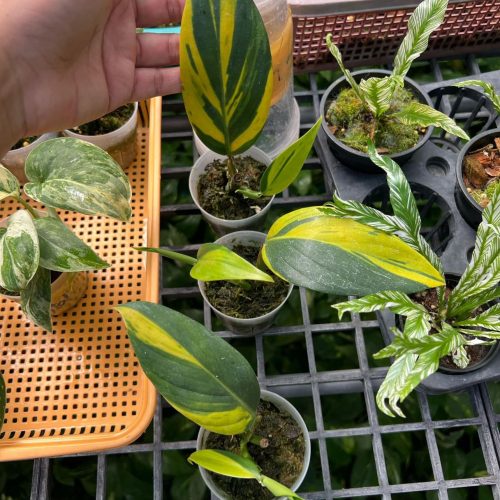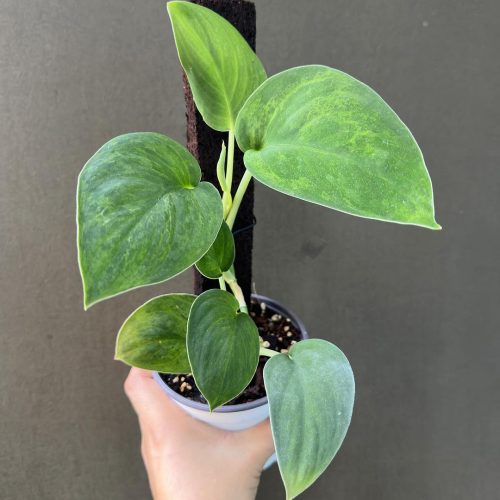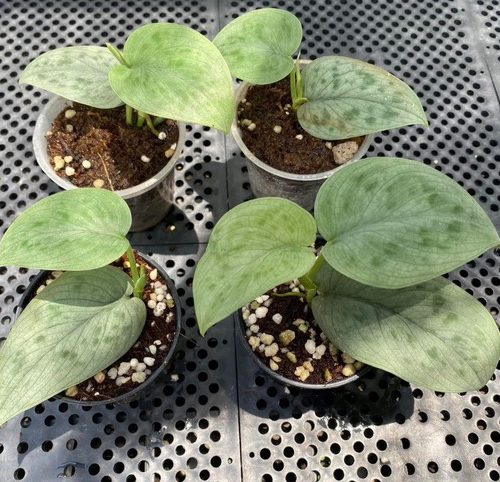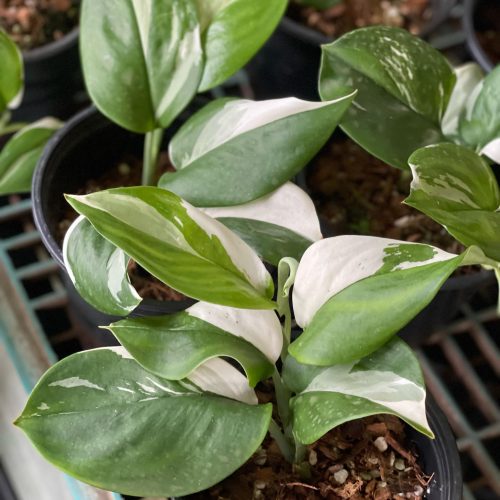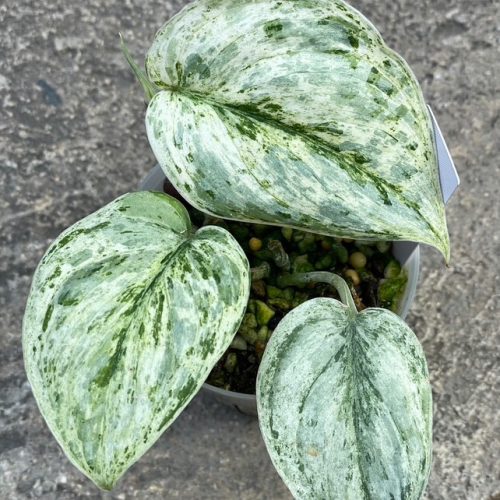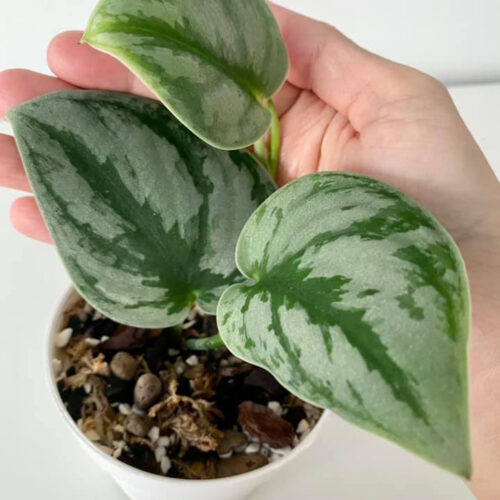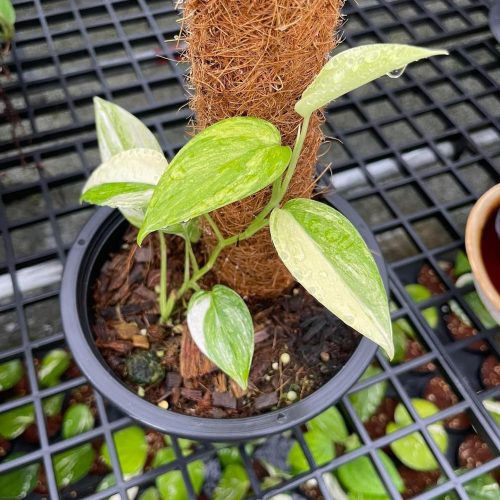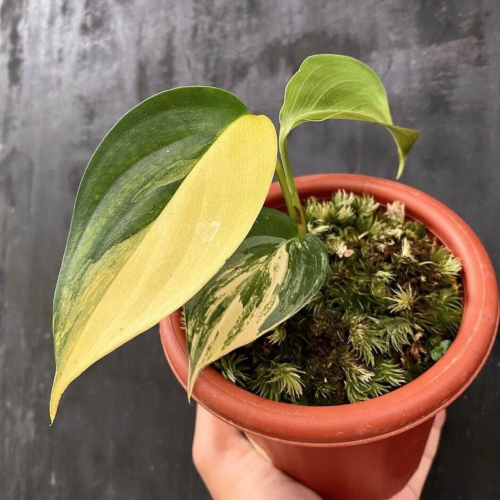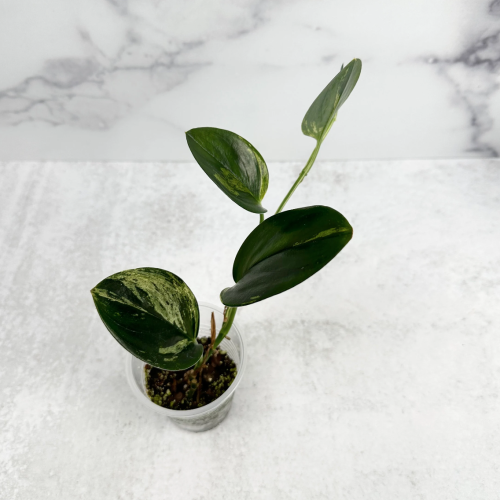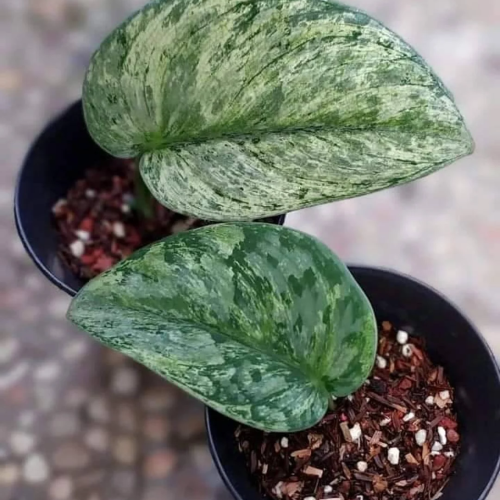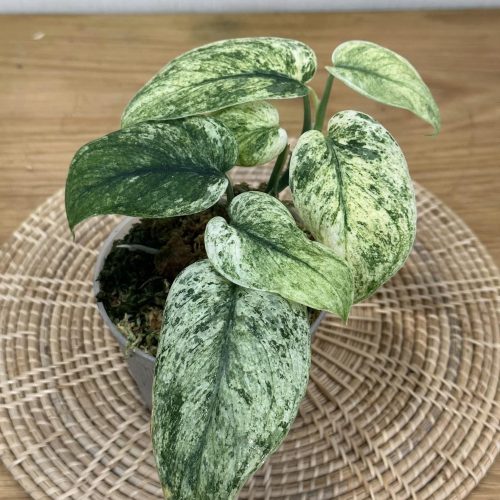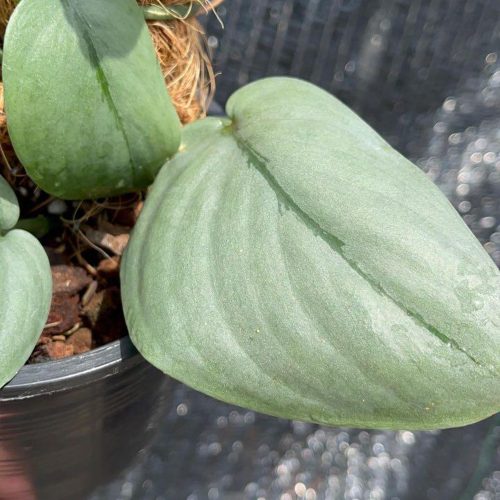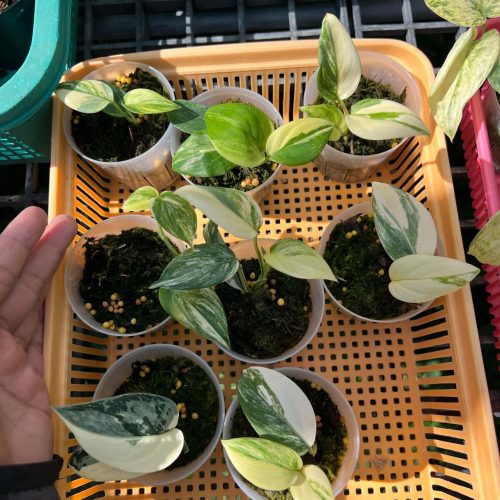The Scindapsus TriColor, also known as Pothos ‘Neon’, is a gorgeous houseplant with leaves that display three vibrant colors – green, yellow, and lime green. This low-maintenance vine is relatively easy to care for at home if you follow some basic guidelines. Here are 5 simple steps to keep your Scindapsus TriColor healthy and happy.
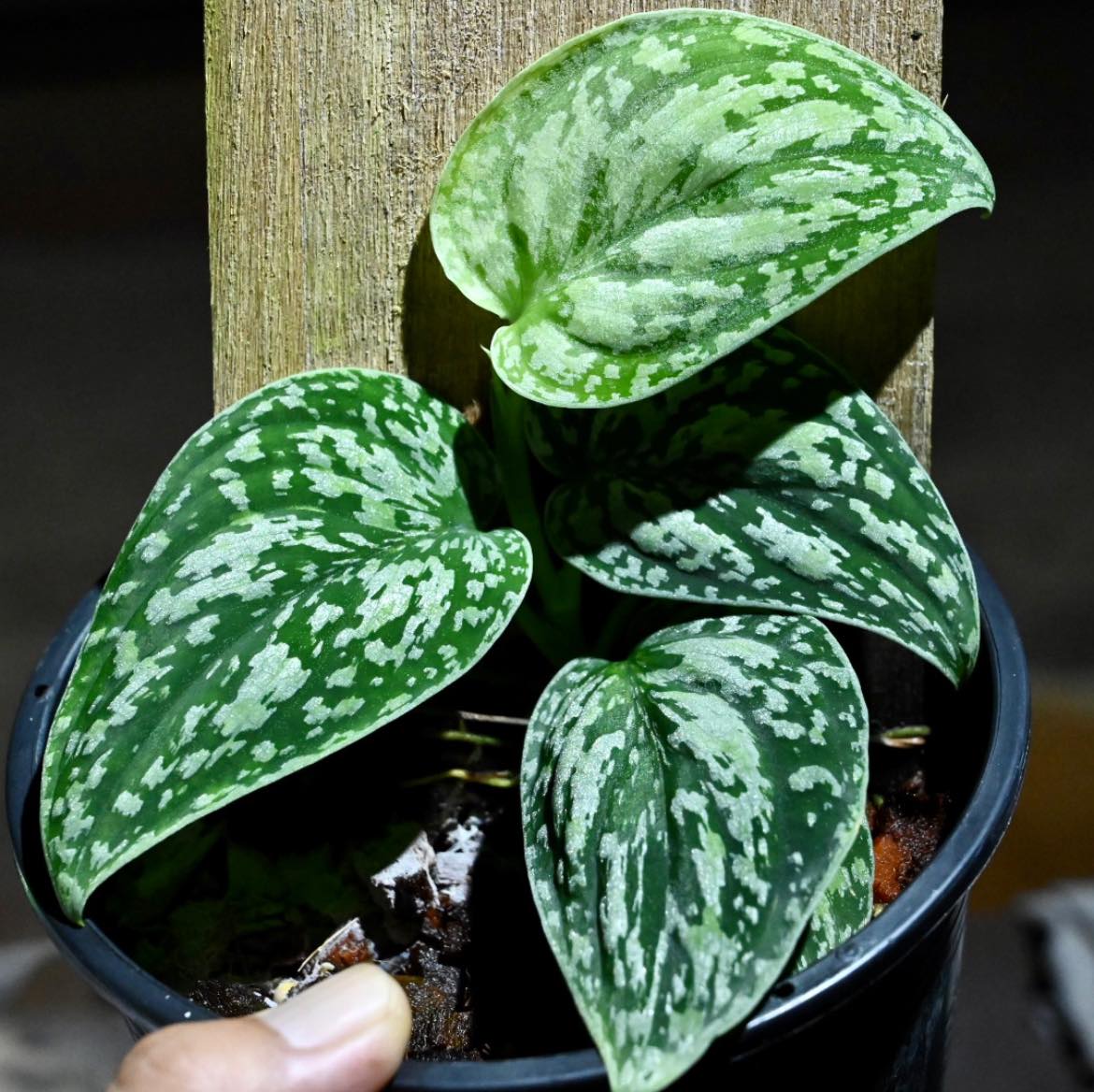
1. Light
Place in bright, indirect light
The Scindapsus TriColor thrives in bright, indirect sunlight. Place it near an east, west, or south-facing window where it can get plenty bright light but is protected from direct sun rays. Direct sunlight can scorch the leaves. The vibrant leaf colors will be most prominent when the plant receives adequate bright, indirect light.
Rotate the plant occasionally
Rotate the pot from time to time so all sides of the plant get even light exposure. This encourages even and bushy growth. If the light is coming from one primary direction, the plant growth will be lopsided and leaning towards the light source.
For more on how to manage light for your Scindapsus to promote healthy growth, you might find useful tips in “Scindapsus 101: A Beginner’s Guide to Understanding and Growing“.
2. Water
Water when the top inch of soil is dry
Scindapsus Tricolor prefers slightly moist soil but is prone to root rot if overwatered. Only water when the top inch of the soil feels dry to touch. Pour sufficient water so it drains out from the drainage holes at the bottom of the pot. This ensures the entire root zone is hydrated while flushing out mineral buildup from the excess water.
Lower watering frequency in winters
In winters when growth is slower, the water requirements are reduced as well. Check soil more infrequently, such as once a week during winters. Water less to prevent soggy soil. Reduce watering even more if kept in a cool spot in winters.
To learn more about adjusting your watering schedule with the changing seasons, refer to “How to Grow Scindapsus in 5 Easy Steps“.
 “Discover the Luminous Beauty of Scindapsus TriColor! Click here to bring this enchanting plant into your home today.”
“Discover the Luminous Beauty of Scindapsus TriColor! Click here to bring this enchanting plant into your home today.”
3. Temperature
Keep in average room temperature
The Scindapsus TriColor enjoys average household temperatures between 60°F to 80°F (15°C to 26°C). Keep it in the living room or bedroom instead of exceedingly hot or cold spots.
Mist occasionally to increase humidity
While it grows well in average indoor humidity levels, misting the leaves occasionally will be beneficial. Use room temperature soft water for misting. Misting provides added moisture to the leaves and keeps them dust-free as well.
For additional guidance on maintaining ideal humidity levels, see “Are you growing scindapsus at home? Find out its 5 secret advantages!“.
4. Fertilizer
Use a balanced liquid fertilizer
In the growing season (spring to summer), feed the Scindapsus TriColor monthly with a balanced liquid houseplant fertilizer diluted to half the normal strength. A fertilizer with an NPK ratio like 10-10-10 works well. Stop fertilizing in winters when growth slows down.
Flush the soil to remove fertilizer buildup
Every 3-4 months, do a good flush of the potting mix to dissolve mineral deposits and salt accumulation from the fertilizer. Pour copious amounts of water from the top so it runs out from the drainage holes thoroughly leaching the soil. Allow all excess water to drain out before placing the plant back on the saucer.
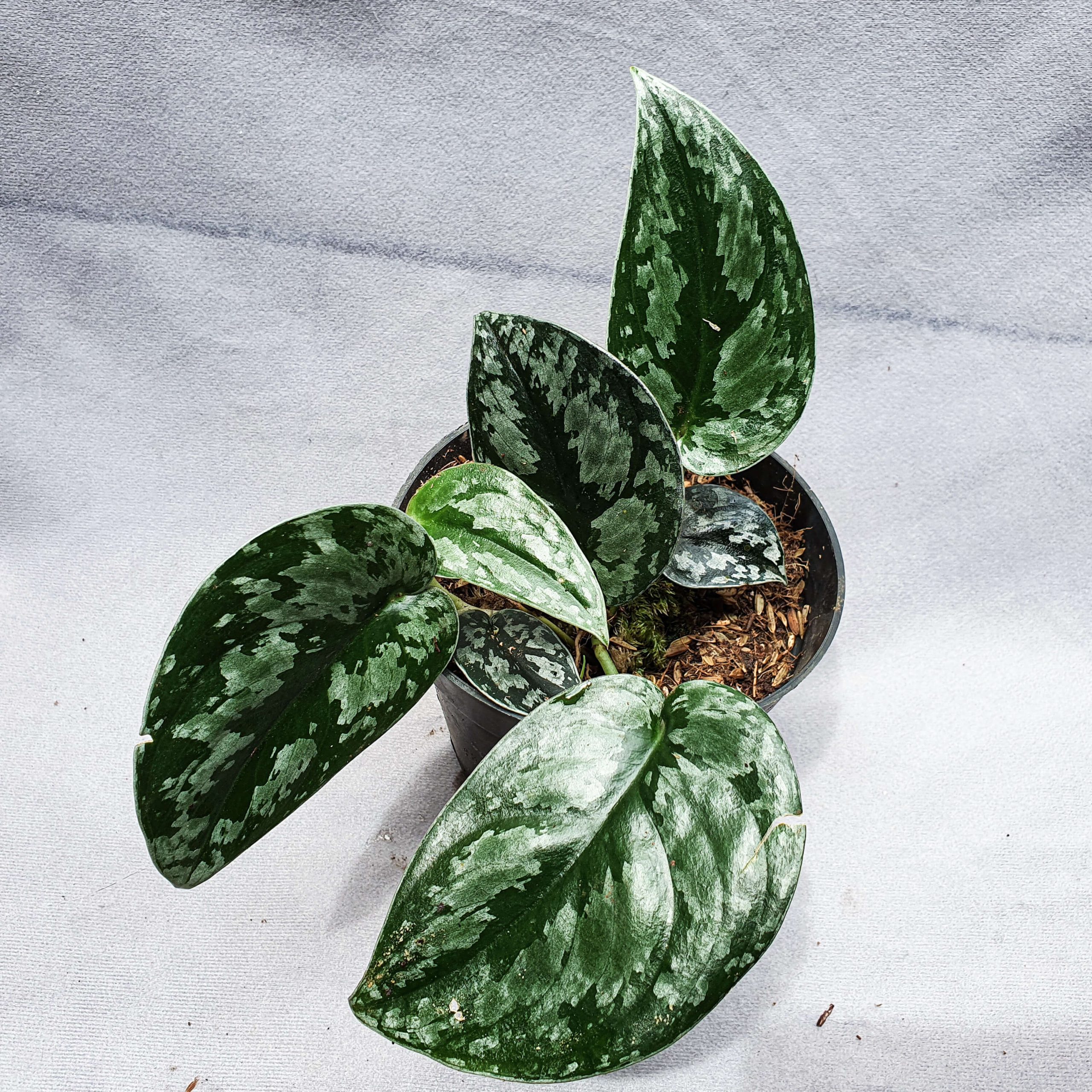
5. Pruning & Training
Prune overgrown vines
To keep the plant tidy and bushy, prune overlong trailing vines using clean shears. Cut back to just above a node so two new shoots can emerge. propagate the cuttings.
Train vines to climb a support
The vining stems of Scindapsus TriColor can be easily trained to climb up a moss pole, trellis or other supports. Use soft plant-safe ties to loosely attach the stem at a few spots. Do not tie too tightly as it will eventually cut into the soft stem. The aerial roots will cling to the support.
Where to buy Scindapsus TriColor? Benefits from importing plants from Thailand
- Shipping: Door to door shipping, fast and safe with Dragon Courier
- Biodiversity: Thailand is known for its rich biodiversity, including a wide variety of aroid species. This diversity allows importers to access a broad range of unique and exotic aroid plants.
- Quality and Health of Plants: The suitable climate helps the plants grown here stay healthy and of high quality.
- Cost-Effectiveness: Due to favorable growing conditions and efficient production methods, Thai aroid plants can often be more cost-effective compared to those from other countries.
- Access to Hybrid Varieties: Thai growers are often involved in the development of new hybrid aroid varieties, offering unique plants that may not be available from other sources.
Scindapsus species are the most sought after by aroid plant lovers
Conclusion
Caring for the Scindapsus TriColor houseplant is quite straightforward when you provide it with bright filtered light, moderate watering, average room temperatures, monthly fertilization, and occasional pruning. Pay attention to these basic needs and it will remain healthy for years with its stunning multicolored leaves cascading attractively from hanging baskets or climbing up supports. It makes an easy-care houseplant that brightens any indoor space with its vibrant colors.
FAQ
- What is a Scindapsus Tricolor? Scindapsus Tricolor, also known as Scindapsus pictus ‘Exotica’ or ‘Tricolor’, is a popular houseplant known for its striking, variegated leaves. Each leaf is unique, featuring a blend of green, white, and pink hues, making it a visually appealing addition to any indoor space.
- How do you care for a Scindapsus Tricolor? Scindapsus Tricolor prefers bright, indirect light and well-draining soil. It’s important to allow the soil to dry out partially between waterings. Overwatering can lead to root rot, so be cautious not to let the plant sit in water. This plant thrives in a humid environment, so consider misting the leaves or placing a humidifier nearby.
- Can Scindapsus Tricolor tolerate low light conditions? While Scindapsus Tricolor can survive in low light, its growth may be stunted, and the vibrancy of its leaves could fade. For optimal growth and leaf coloration, it’s best to place the plant in a spot with bright, indirect sunlight.
- Is Scindapsus Tricolor toxic to pets? Yes, Scindapsus Tricolor is considered toxic to pets if ingested. It can cause oral irritation, vomiting, and difficulty swallowing in cats and dogs. It’s advisable to keep this plant out of reach of pets.
- How fast does Scindapsus Tricolor grow? Under ideal conditions, Scindapsus Tricolor is a moderately fast-growing vine. Its growth rate can be influenced by factors such as light, water, and the overall care it receives. Regular pruning can encourage fuller, bushier growth.

